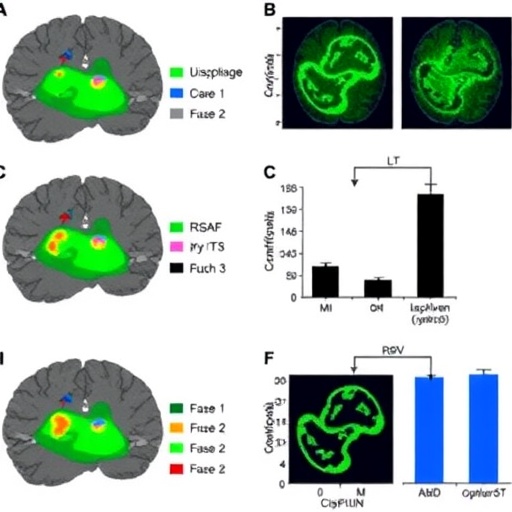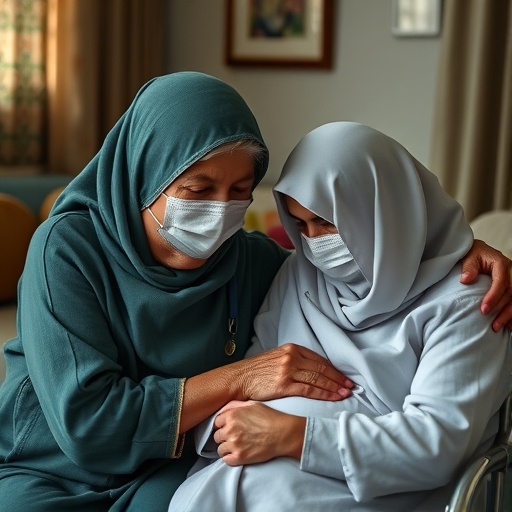In recent years, the global healthcare landscape has encountered profound challenges, particularly in low- and middle-income countries (LMICs). These challenges have prompted researchers and healthcare innovators to explore new methodologies aimed at enhancing service delivery in these regions. A pivotal study emerging from this exploration is the work of Shafieian, Abolfathi, and Yazdi, which introduces a groundbreaking framework dubbed “Caredesign.” This innovative approach serves as a structured needs-finding mechanism dedicated to enhancing healthcare service innovation specifically tailored to the unique demands of LMICs.
The core premise of Caredesign lies in its ability to systematically identify the pressing needs in healthcare services that are often overlooked or inadequately addressed. In many LMICs, healthcare services grapple with a myriad of challenges, including limited resources, inadequate infrastructure, and varying cultural perspectives on health and wellness. Caredesign seeks to bridge the gap between the existing state of healthcare services and the ideal standard hastily pursued by many organizations and governments within these regions.
Integral to the Caredesign framework is its emphasis on user-centered design. By prioritizing the voices and experiences of patients and healthcare workers, this approach recognizes the essential role that stakeholders play in shaping effective healthcare solutions. Through qualitative and quantitative research methodologies, the framework gathers insights about the specific needs, preferences, and barriers to access faced by individuals in LMICs, thereby allowing for more informed decision-making when it comes to designing and implementing innovative healthcare services.
Moreover, the study outlines the critical importance of contextual understanding in the development of healthcare innovations. Each region has its unique healthcare landscape influenced by socio-economic factors, cultural norms, and technological access. Caredesign’s flexibility allows it to adapt to diverse contexts, ensuring that innovations are relevant and pragmatic. This contextual adaptability sets Caredesign apart from one-size-fits-all frameworks that often fail to resonate with local populations.
In implementing the Caredesign framework, stakeholders can also benefit from a collaborative approach that fosters partnerships among various organizations, from local health practitioners and government entities to NGOs and international health organizations. Such collaboration is vital in pooling resources, expertise, and insights, ultimately leading to a more robust and multifaceted approach to healthcare innovation.
The research further highlights the importance of continuous evaluation and feedback in the healthcare innovation process. Unlike traditional methods that may rely on static assessments, Caredesign emphasizes the need for ongoing dialogue with users to understand evolving needs and challenges. This dynamic approach allows for iterative improvements and refinements to healthcare services over time, making them more responsive and effective in meeting patient needs.
In addition to reinforcing the importance of user engagement, the framework encourages the use of data-driven approaches to healthcare innovation. By leveraging data analytics, healthcare stakeholders can more accurately identify trends, assess the impact of interventions, and make evidence-based decisions that enhance service quality. In combination with qualitative insights, this data-centric method creates a comprehensive understanding of healthcare challenges, paving the way for targeted and efficacious solutions.
Importantly, Caredesign brings to the forefront the necessity of incorporating innovation into policy-making. The frameworks and strategies derived from this approach can inform healthcare policies that are more attuned to the realities faced by LMICs. Policymakers equipped with insights gained from the Caredesign framework can enact more relevant and effective legislation aimed at bolstering healthcare systems, thereby improving health outcomes and overall well-being in these regions.
The implications of this framework extend beyond immediate healthcare services; they contribute to broader socio-economic development goals. By enhancing healthcare service innovation, Caredesign aligns with global initiatives aimed at achieving Sustainable Development Goals (SDGs), particularly those targeting health and well-being. Improved health services can stimulate local economies, reduce poverty, and promote social equity, showcasing how healthcare innovation can catalyze holistic development.
Moreover, as the world becomes increasingly interconnected, advancements in healthcare service innovation in LMICs can also resonate on a global scale. Insights and innovations generated through the Caredesign framework can serve as valuable case studies for healthcare leaders in high-income countries facing their unique set of challenges. The transference of learning and best practices across borders has the potential to enrich global efforts towards improving health systems and outcomes universally.
As we look towards the future, the Caredesign framework offers a promising pathway for redefining healthcare service delivery in low- and middle-income countries. Through its structured approach to needs finding, user-centered design, and collaboration, this framework not only addresses immediate healthcare needs but also lays the groundwork for sustainable and impactful healthcare innovation. By engaging with the unique experiences of stakeholders, leveraging data-driven insights, and aligning with policy initiatives, Caredesign firmly positions itself as a critical tool in the quest to enhance healthcare services in regions that need them the most.
In conclusion, as global health challenges continue to evolve, innovative frameworks like Caredesign are essential to catalyzing meaningful change in healthcare systems throughout low- and middle-income countries. The study by Shafieian, Abolfathi, and Yazdi serves as a clarion call for healthcare innovators and policymakers to embrace a more holistic and adaptive approach to healthcare service innovation, ensuring that every single patient receives the quality care they rightfully deserve.
Subject of Research: Healthcare service innovation in low- and middle-income countries
Article Title: Caredesign: A Needs-Finding Framework for Enhancing Healthcare Service Innovation in Low- and Middle-Income Countries
Article References:
Shafieian, M., Abolfathi, N. & Yazdi, Y. Caredesign: A Needs-Finding Framework for Enhancing Healthcare Service Innovation in Low- and Middle-Income Countries.
Ann Biomed Eng (2025). https://doi.org/10.1007/s10439-025-03912-x
Image Credits: AI Generated
DOI: https://doi.org/10.1007/s10439-025-03912-x
Keywords: Healthcare Innovation, Low- and Middle-Income Countries, Caredesign, Service Delivery, User-Centered Design, Policy-Making, Sustainable Development Goals, Data-Driven Approaches, Collaboration in Healthcare, Continuous Evaluation.
Tags: Caredesign framework for healthcarechallenges in low-income healthcare systemscultural perspectives on health and wellnessenhancing service delivery in developing countrieshealthcare infrastructure challengeshealthcare innovation in developing countrieshealthcare needs assessment methodologiesimproving healthcare services in LMICspatient engagement in healthcare solutionsqualitative research in healthcare innovationresource allocation in healthcareuser-centered design in healthcare





